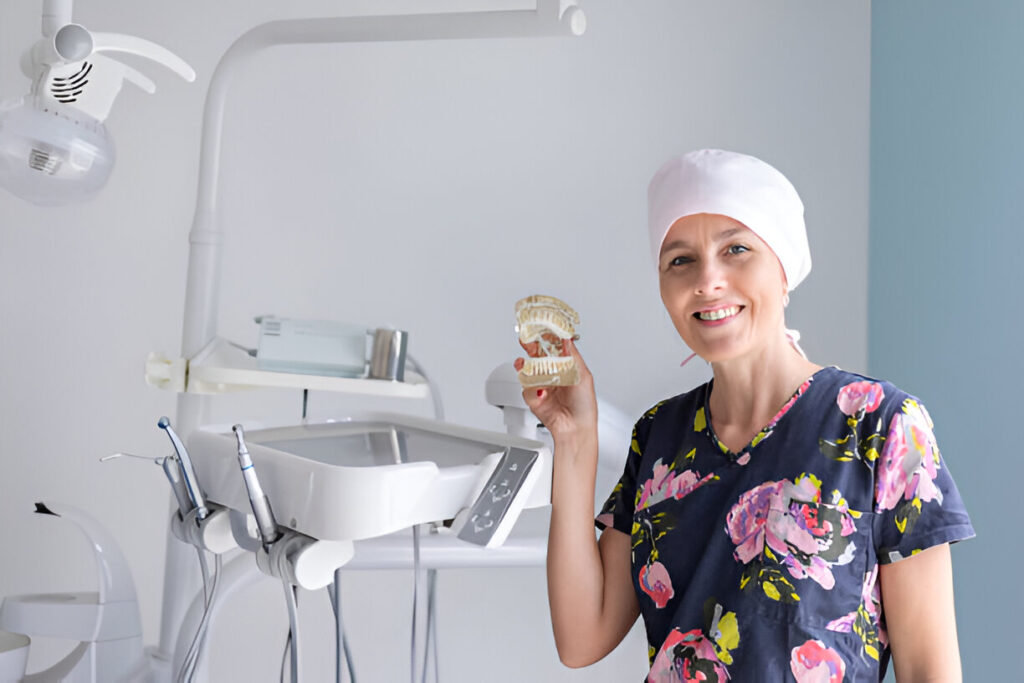Many people dream of a straighter smile, but what if you already have a dental crown? Can Invisalign still work for you? The good news is that NHS Dentist Aberdeen offers Invisalign treatment even if you have crowns. However, there are some factors to consider before starting treatment.
In this article, we will explain how Invisalign works with crowns, the challenges you might face, and what you need to know before beginning your treatment.
What Is Invisalign?
Invisalign treatment in Aberdeen is a modern orthodontic option that straightens teeth using clear plastic aligners instead of traditional metal braces. These aligners are custom-made to fit your teeth and gradually shift them into the correct position.
Many people choose Invisalign treatment in Aberdeen because it is nearly invisible, removable, and more comfortable than metal braces. It can effectively correct dental issues such as crowding, gaps, and bite problems.
Is Invisalign Better Than Braces?
What Is a Dental Crown?
A dental crown is a protective cap placed over a damaged or weakened tooth. Crowns help restore the shape, strength, and function of a tooth. They are often used after a root canal, large filling, or injury.
Crowns can be made from different materials, including:
- Porcelain – Matches the colour of natural teeth.
- Ceramic – Aesthetic and durable option.
- Metal – Very strong but less common for front teeth.
- Porcelain-fused-to-metal – A mix of strength and aesthetics.
Since crowns are not natural teeth, some people worry about how Invisalign will affect them.
Can You Get Invisalign If You Have a Crown?
Yes, you can get Invisalign with a crown, but there are a few things to consider. Invisalign works by applying pressure to move teeth, and crowns are attached to teeth just like natural enamel. However, some factors can impact treatment success.
Can You Chew Gum with Invisalign?
Factors That Affect Invisalign with a Crown
- Crown Stability
- The crown must be securely bonded to the tooth.
- Loose or weak crowns may need replacement before starting Invisalign.
- Crown Location
- Front teeth crowns usually work well with Invisalign.
- Back teeth crowns may require special adjustments, especially if Invisalign attachments are needed.
- Crown Material
- Porcelain and ceramic crowns respond well to Invisalign.
- Metal crowns may require extra care due to their strength.
- Tooth Movement
- Invisalign moves natural teeth easily, but crowns do not have nerve endings.
- If a crowned tooth needs to move a lot, treatment may take longer.
Can Invisalign Fix an Overbite?
How Invisalign Works with Crowns
Invisalign aligners are custom-made to fit over your teeth, including crowned ones. If needed, small attachments may be placed on teeth to help aligners grip better. These attachments are usually made from tooth-coloured material, but placing them on a crown can be tricky.
Your dentist will assess whether attachments are safe to use on your crown or if another method is better.
How Long Does Invisalign Take to Stop Hurting?
Potential Challenges of Invisalign with Crowns
While Invisalign is usually safe for people with crowns, there are some challenges to consider.
1. Risk of Crown Loosening
- Invisalign applies pressure to teeth, which could weaken an older crown.
- If a crown is loose or damaged, it may need replacement before treatment.
2. Attachments May Not Stick Well
- Invisalign sometimes requires attachments to help with tooth movement.
- Attachments may not bond as well to crowns as they do to natural teeth.
- Your dentist may place the attachment on a nearby natural tooth instead.
3. Crowned Teeth May Not Move as Easily
- Since a crowned tooth does not have a living root, it may move differently.
- Invisalign treatment might take longer for teeth with crowns.
Should You Get a Crown Before or After Invisalign?
If you need a crown and also want Invisalign, timing is important.
- If a tooth is badly damaged, it is best to place a temporary crown first, then replace it with a permanent one after Invisalign.
- If a crown is already in place, your dentist will decide if Invisalign can move the tooth safely.
It is important to discuss your options with your dentist before deciding.
Caring for Your Teeth During Invisalign Treatment
If you have crowns and are using Invisalign, follow these tips to protect your teeth:
1. Maintain Good Oral Hygiene
- Brush twice a day and floss regularly.
- Clean your aligners daily to prevent plaque build-up.
2. Be Gentle with Your Aligners
- Remove aligners carefully to avoid putting too much pressure on crowned teeth.
- Avoid biting down on your aligners when putting them in place.
3. Visit Your Dentist Regularly
- Regular check-ups ensure your crown remains secure during treatment.
- If you notice pain or movement in your crown, contact your dentist immediately.
Schedule your appointment today
Conclusion
Yes, you can get Invisalign with a crown, but special care is needed. If your crown is secure, well-maintained, and made of a compatible material, Invisalign can work just like it does for natural teeth.
Before starting treatment, visit your dentist to check the condition of your crown. They will design a treatment plan that works for your specific case. With the right approach, you can achieve a straighter, more confident smile—crown and all!
Start Your Invisalign Journey at Holburn Dental and Implant Centre
If you’re considering Invisalign but have dental crowns, Holburn Dental and Implant Centre can help! Our expert team provides personalised Invisalign treatment, ensuring the best results while protecting your crowns.
Book a consultation today to discuss your options and take the first step towards a straighter, healthier smile. Call us now or visit our website to schedule your appointment!
Frequently Asked Questions
1. Can Invisalign Damage My Crown?
Invisalign is safe for crowns, but if a crown is old or weak, it might loosen. Your dentist will check your crown’s condition before starting treatment.
2. Will Invisalign Work Differently on a Crowned Tooth?
Yes, Invisalign moves crowned teeth differently than natural teeth. Crowns do not have nerves, so movement may take longer.
3. Can Invisalign Attachments Be Placed on Crowns?
It depends. Attachments may not stick as well to crowns, so your dentist may place them on natural teeth instead.
4. What If My Crown Comes Loose During Invisalign?
If your crown becomes loose, see your dentist immediately. It may need to be re-cemented or replaced.
5. Should I Get a New Crown Before or After Invisalign?
If possible, wait until after Invisalign to get a new crown. That way, the crown can be shaped to fit your newly aligned teeth.


